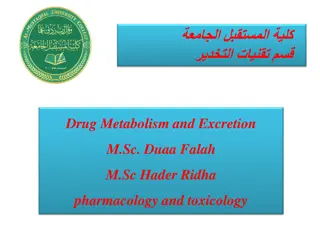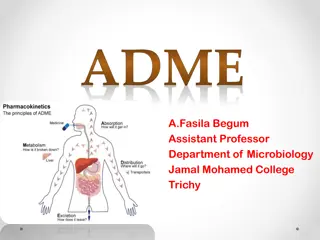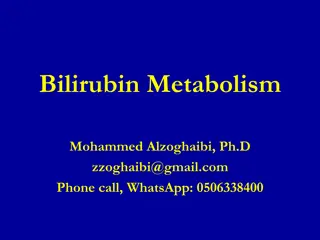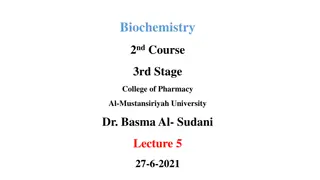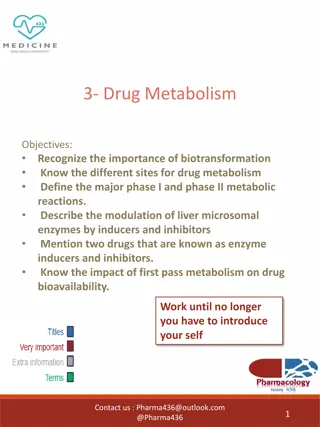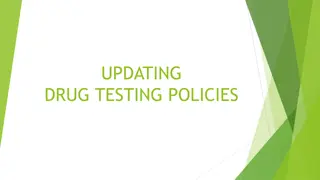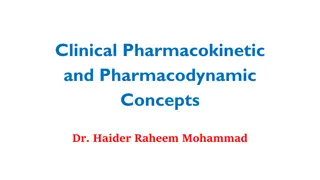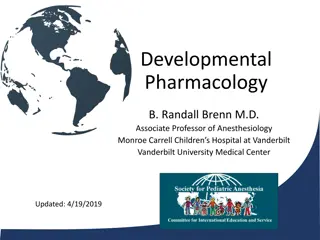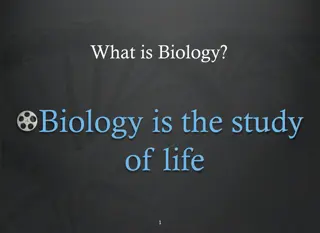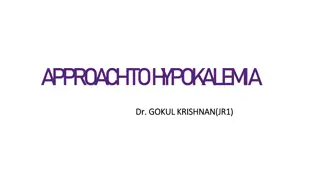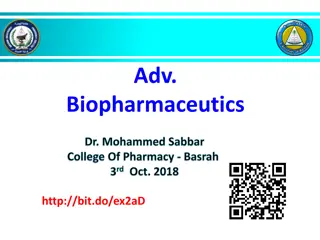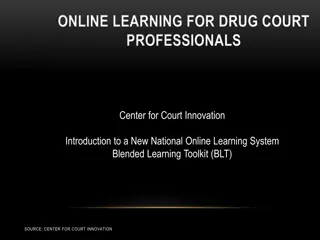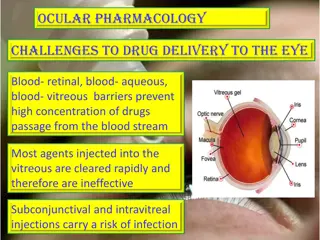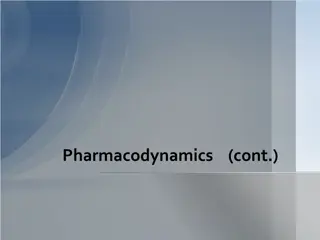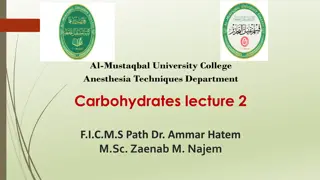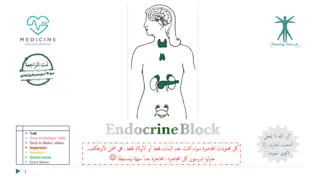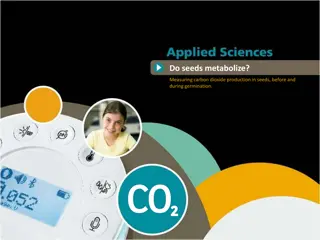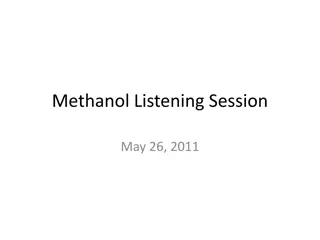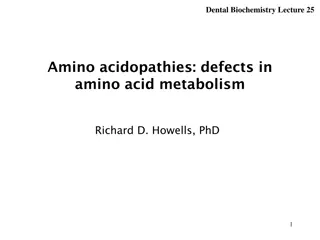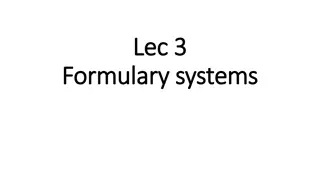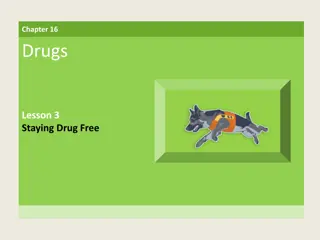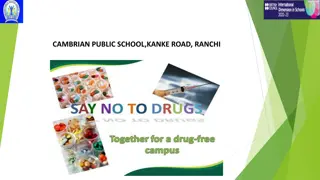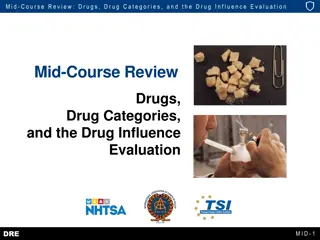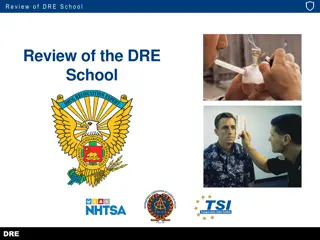Understanding Drug Metabolism and Excretion in the Human Body
In the realm of pharmacology, the process of eliminating drugs from the body involves hepatic metabolism, biliary elimination, and urinary excretion. Once a drug is introduced into the system, these routes of elimination come into play, highlighting the crucial role they play in drug clearance and eventual removal from the body.
Download Presentation

Please find below an Image/Link to download the presentation.
The content on the website is provided AS IS for your information and personal use only. It may not be sold, licensed, or shared on other websites without obtaining consent from the author. Download presentation by click this link. If you encounter any issues during the download, it is possible that the publisher has removed the file from their server.
E N D
Presentation Transcript
Lecturer Dr. Firas Al Dabbagh
Drug Metabolisms and excretions. Once a drug enters the body, the process of elimination begins. The three major routes of elimination are hepatic metabolism, biliary elimination, and urinary elimination. Together, these elimination processes decrease the plasma concentration.
A. Kinetics of metabolism 1. First-order kinetics: The metabolic transformation of drugs is catalyzed by enzymes, That is, the rate of drug metabolism and elimination is directly proportional to the concentration of free drug. 2. Zero-order kinetics: With a few drugs, such as aspirin, ethanol, and phenytoin, the doses are very large, The enzyme is saturated by a high free drug concentration, and the rate of metabolism remains constant over time. This is called zero-order kinetics (also called nonlinear kinetics). A constant amount of drug is metabolized per unit of time. The rate of elimination is constant and does not depend on the drug concentration.
B. Reactions of drug metabolism . The kidney cannot efficiently eliminate lipophilic drugs that readily cross cell membranes and are reabsorbed in the distal convoluted tubules. Therefore, lipid-soluble agents are first metabolized into more polar (hydrophilic) substances in the liver via two general sets of reactions, called phase I and phase II. Phase I: Phase I reactions convert lipophilic drugs into more polar molecules by introducing or unmasking a polar functional group, such as OH or NH2 . Phase I reactions usually involve reduction, oxidation, or hydrolysis. Phase I metabolism may increase, decrease, or have no effect on pharmacologic activity.
Phase II: This phase consists of conjugation reactions. If the metabolite from phase I metabolism is sufficiently polar, it can be excreted by the kidneys. However, many phase I metabolites are still too lipophilic to be excreted. A subsequent conjugation reaction with an endogenous substrate, such as glucuronicacid, sulfuric acid, acetic acid, or an amino acid, results in polar, usually more water-soluble compounds that are often therapeutically inactive.
Most important Factors affecting Metabolisimare.. 1.Enzyme Inducers. Certain drugs (for example, phenobarbital, rifampin, and carbamazepine) are capable of increasing the synthesis of one or more CYP isozymes . This results in increased biotransformation of drugs and can lead to significant decreases in plasma concentrations of drugs metabolized by these CYP isozymes, with concurrent loss of pharmacologic effect
2.Enzyme inhibitors. : Inhibition of CYP isozymeactivity is an important source of drug interactions that lead to serious adverse events, Numerous drugs have been shown to inhibit one or more of the CYP-dependent biotransformation pathways of warfarin. For example, omeprazole is a potent inhibitor of three of the CYP isozymes responsible for warfarin metabolism. If the two drugs are taken together, plasma concentrations of warfarin increase, which leads to greater anticoagulant effect and increased risk of bleeding. [Note: The more important CYP inhibitors are erythromycin, ketoconazole, and ritonavir, because they each inhibit several CYP isozymes.]
What is CYP isozymes The phase I reactions most frequently involved in drug metabolism are catalyzed by the cytochrome P450 system (also called microsomal mixed-function oxidases). The P450 system is important for the metabolism of many endogenous compounds (such as steroids, lipids) and for the biotransformation of exogenous substances (xenobiotics). Cytochrome P450, designated as CYP, is a superfamily of heme- containing isozymes that are located in most cells, but primarily in the liver and GI tract.
DRUG CLEARANCE BY THE KIDNY Drugs must be sufficiently polar to be eliminated from the body. Removal of drugs from the body occurs via a number of routes, the most important being elimination through the kidney into the urine. Patients with renal dysfunction may be unable to excrete drugs and are at risk for drug accumulation and adverse effects Glomerular filtration: Proximal tubular secretion Distal tubular reabsorption: Role of drug metabolism
CLEARANCE BY OTHER ROUTS Drug clearance may also occur via the intestines, bile, lungs, and breast milk, among others. Drugs that are not absorbed after oral administration or drugs that are secreted directly into the intestines or into bile are eliminated in the feces. The lungs are primarily involved in the elimination of anesthetic gases (for example, isoflurane). Elimination of drugs in breast milk may expose the breast-feeding infant to medications and/or metabolites being taken by the mother and is a potential source of undesirable side effects to the infant. Excretion of most drugs into sweat, saliva, tears, hair, and skin occurs only to a small extent. Total body clearance and drug half- life are important measures of drug clearance that are used to optimize drug therapy and minimize toxicit


